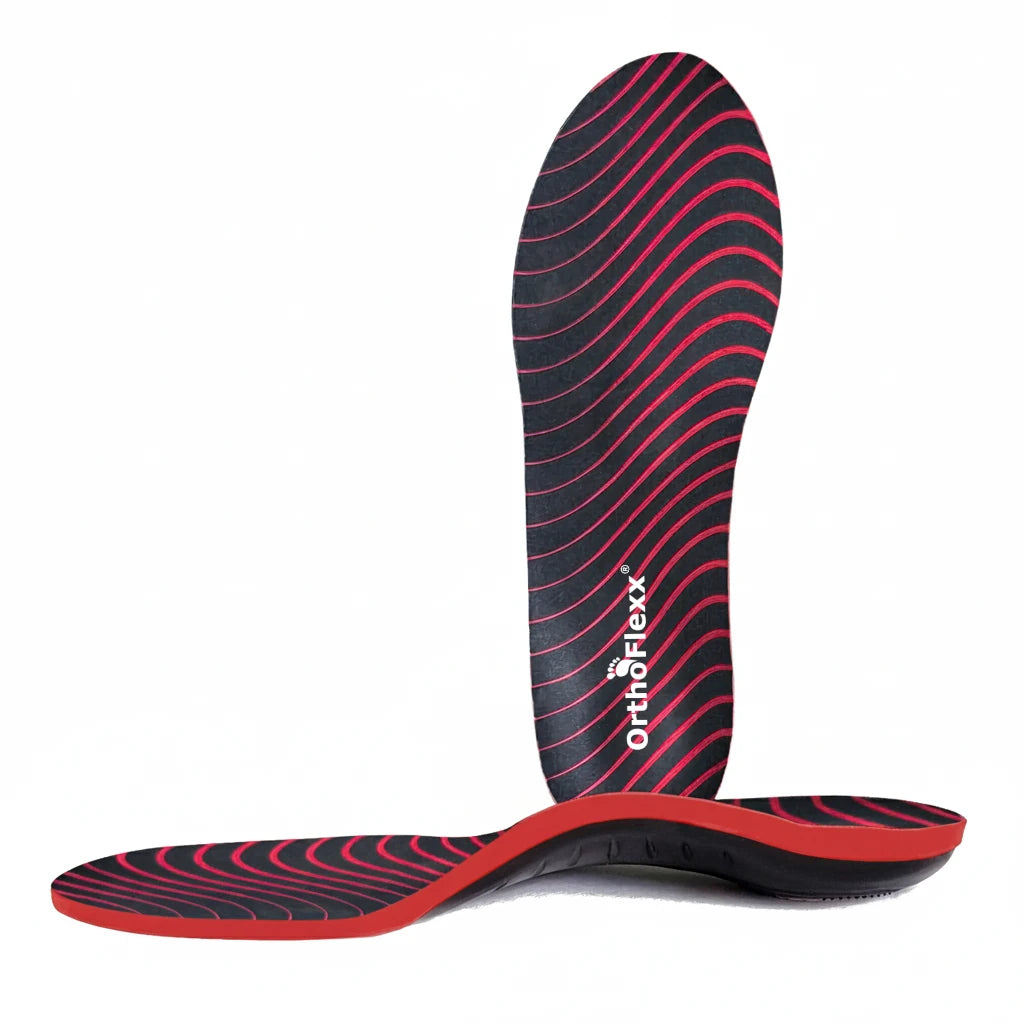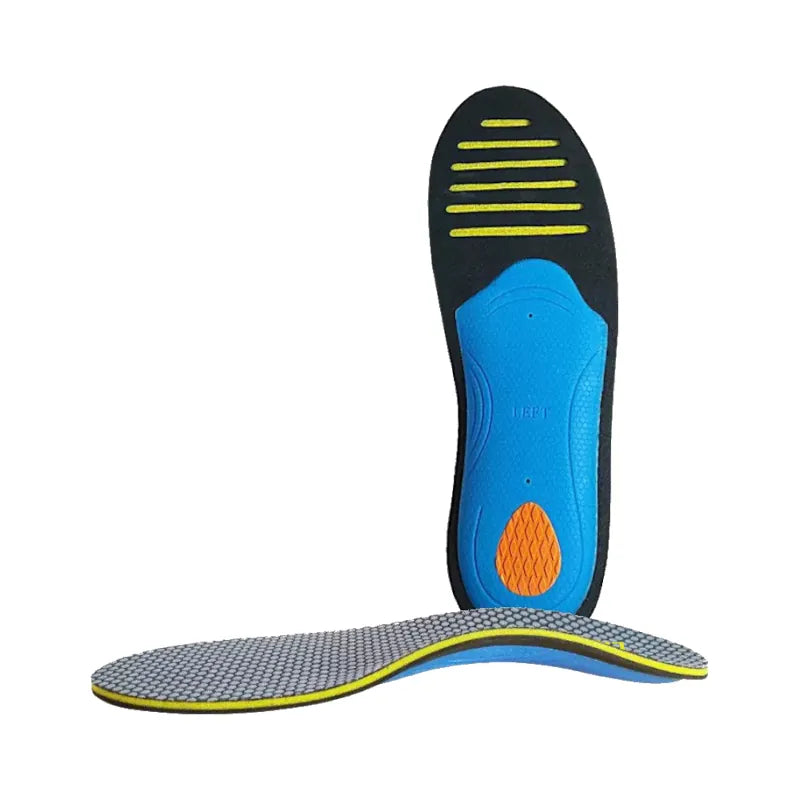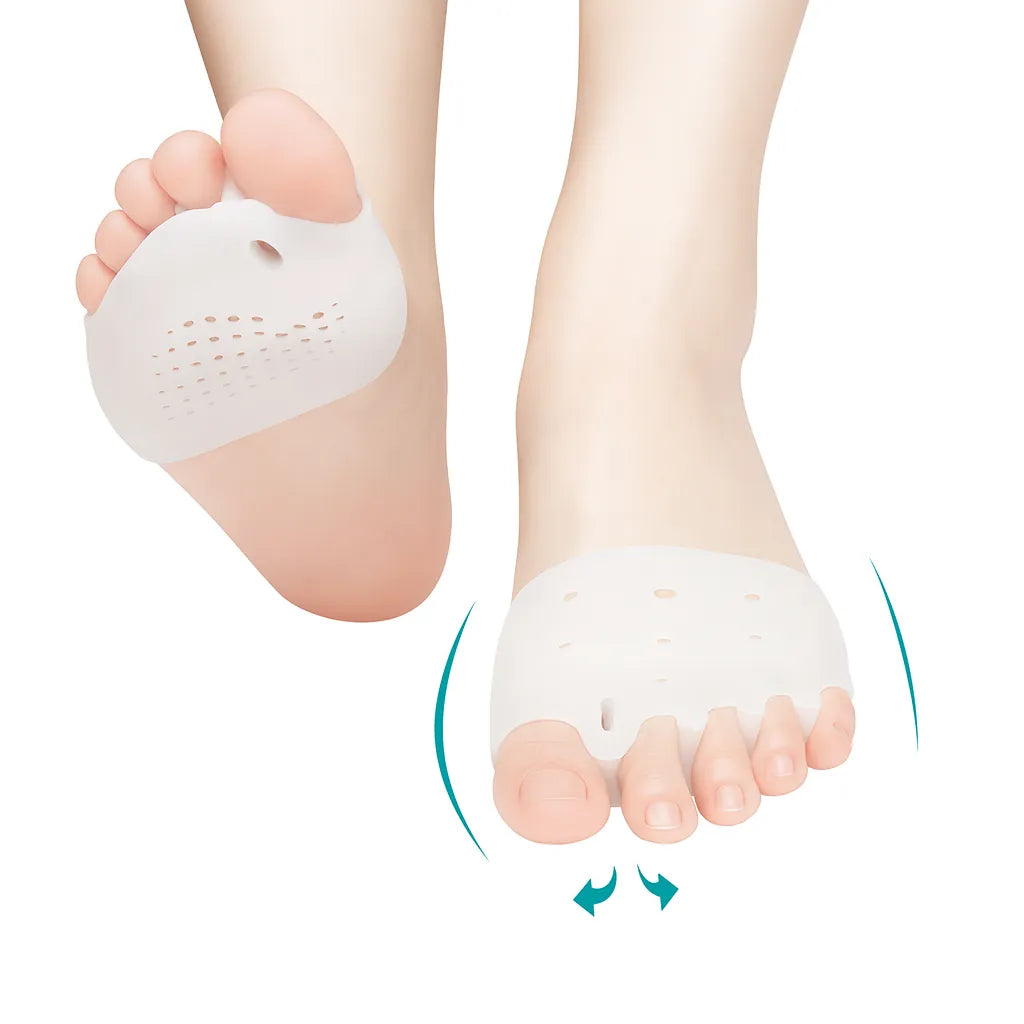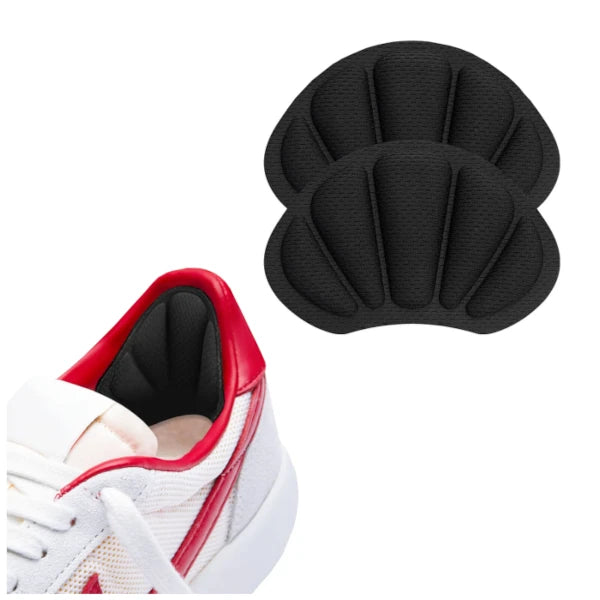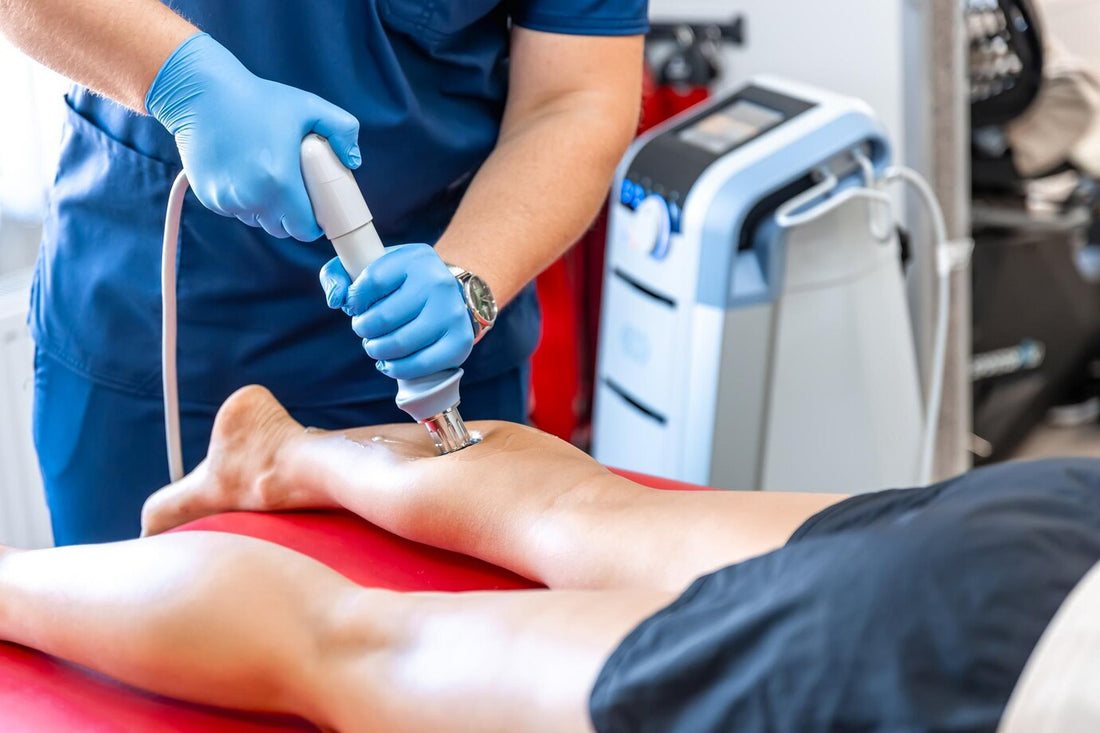
Comparing Plantar Fasciitis Medical Devices: Reviews and Recommendations
Share
Comparing Plantar Fasciitis Medical Devices: Reviews & Recommendations
Are you tired of dealing with the nagging pain of plantar fasciitis? Seeking relief and a solution that actually works? Why settle for only generic methods like stretching or exercises when specialized devices can provide an additional relief? By exploring review findings, clinical trials, and expert interviews, we'll uncover the most effective interventions and approaches. Say goodbye to endless trial-and-error and make an informed decision about your plantar fasciitis treatment. Get ready to embark on a journey towards pain-free feet!
Effectiveness of Foot Orthoses for Plantar Fasciitis Treatment
To effectively treat plantar fasciitis, it is essential to explore various medical devices and treatments. One such option is the use of foot orthoses, which have shown promising results in alleviating pain and providing support for individuals suffering from this condition.
Foot orthoses are specially designed inserts or shoe insoles that help distribute pressure evenly across the foot while providing cushioning and arch support. Research studies have demonstrated the positive impact of foot orthoses on plantar fasciitis patients, highlighting their effectiveness as a treatment option.
One key benefit of using foot orthoses is their ability to reduce plantar fascia thickness. Studies have found that wearing orthotic devices can lead to a decrease in the thickness of the affected foot's plantar fascia over time. This reduction in thickness indicates a healing process and improvement in the condition.

Foot orthoses have been shown to improve functional outcomes for individuals with chronic plantar fasciitis. They can enhance foot function and alleviate pain, allowing patients to engage in daily activities with greater ease and comfort.
While foot orthoses may not be the sole solution for everyone experiencing plantar fasciitis, they offer a complementary treatment option that can significantly improve symptoms and aid in recovery. It is important to consult with a healthcare professional or podiatrist who can assess your specific condition and provide recommendations tailored to your needs.
Comparison of Custom and Prefabricated Orthoses
You have two main options: custom-made orthoses and prefabricated orthoses. Let's compare the advantages and disadvantages of each to help you make an informed decision.
Custom-made vs. Prefabricated Orthoses
Custom-made Orthoses:
Pros:
- Designed specifically for your foot shape and condition.
- Offers better arch support and alignment due to personalized fit.
- Can address specific biomechanical issues.
Cons:
- Higher cost compared to prefabricated orthoses.
- Requires time for measurements, casting, and fabrication.
- May be expensive.
Prefabricated Orthoses:
Pros:
- More affordable compared to custom-made orthoses.
- Immediate availability for purchase without waiting or measurements.
- Suitable for individuals with mild-to-moderate symptoms or general foot discomfort.
Cons:
- Limited customization options may not provide optimal support for everyone.
- May not address specific biomechanical issues as effectively as custom-made orthoses.
Choosing Between Custom or Prefabricated Orthoses:
To determine which option is best for you, consider the following factors:
- Cost: If budget is a concern, prefabricated orthoses may be a more affordable choice.
- Fit: Custom-made orthoses offer a tailored fit that can provide better support if you have unique foot characteristics or severe symptoms.
- Individual Needs: Consider your specific condition and any biomechanical issues that need addressing. Custom-made orthoses are more suitable for complex cases.
Remember that every individual is different, so what works well for one person may not work as effectively for another. It's essential to consult with a healthcare professional who can assess your needs and guide you towards the most suitable option.
The Role of Cortisone in Plantar Fasciitis Treatment
Cortisone injections are commonly used in the treatment of chronic plantar fasciitis. These injections contain corticosteroids, which are powerful anti-inflammatory medications. The primary goal of cortisone injections is to reduce inflammation and provide temporary pain relief for individuals suffering from plantar fasciitis.
The use of cortisone injections can be beneficial for those who have tried other conservative treatments without success. When injected directly into the affected area, cortisone helps to decrease swelling and alleviate pain. It works by suppressing the immune response and reducing the production of inflammatory substances.
However, it's important to note that while cortisone injections can provide short-term relief, they do not address the underlying cause of plantar fasciitis. They are typically used as a part of a comprehensive treatment plan that includes stretching exercises, physical therapy, orthotic devices, and lifestyle modifications.
While cortisone injections can be effective in managing symptoms, there are potential risks and side effects associated with their use. Some individuals may experience temporary pain or discomfort at the injection site. In rare cases, complications such as infection or damage to surrounding tissues may occur.
It's also worth mentioning that cortisone injections should not be used as a long-term solution for treating plantar fasciitis. Prolonged use of corticosteroids can weaken tissues and increase the risk of developing conditions like tarsal tunnel syndrome.
Superior Design and Materials in Medical Devices for Plantar Fasciitis
Innovative Designs for Enhanced Comfort and Support
Medical devices for plantar fasciitis treatment have come a long way in terms of design. Manufacturers have developed innovative designs that prioritize comfort, support, and effectiveness. These designs aim to alleviate the pain associated with plantar fasciitis by providing targeted relief to the affected area.
- Orthotic insoles: These specially designed insoles provide arch support and help distribute pressure evenly across the foot. They are made from high-quality materials such as silicone or gel, which offer cushioning and shock absorption.
- Silicone heel pads: These discreet inserts fit snugly into your shoes and provide additional cushioning to the heel. They are lightweight, flexible, and durable, making them ideal for long-term use.
- Gel heel cups: Similar to silicone heel pads, gel heel cups offer excellent shock absorption properties. The gel material molds to the shape of your foot, providing customized support exactly where you need it.
Advanced Materials for Improved Durability and Performance
In addition to innovative designs, medical device manufacturers have also focused on using advanced materials that enhance durability, breathability, and overall performance.
- Breathable fabrics: Many medical devices now incorporate breathable fabrics that allow air circulation around the foot. This helps prevent excessive sweating and keeps your feet cool and dry throughout the day.
- Lightweight yet sturdy construction: The use of lightweight materials ensures that these devices do not add unnecessary bulk or weight to your shoes. However, despite their lightweight nature, they are still built to withstand daily wear-and-tear.
By combining superior design elements with advanced materials:
- Patients can experience significant improvements in their plantar fasciitis symptoms.
- The devices can provide the necessary support and cushioning to alleviate heel pain, absorb impact and promote healing.
- They offer a non-invasive alternative to surgery or other more aggressive treatment options.
Recommendations for Plantar Fasciitis Medical Devices
In your search for the best plantar fasciitis medical devices, you've learned about the effectiveness of foot orthoses, the comparison between custom and prefabricated orthoses, the potential benefits of prolotherapy injection and platelet-rich plasma (PRP), as well as the role of cortisone in treatment. We explored how superior design and materials can make a difference in medical devices for plantar fasciitis. Now that you have this information at hand, it's time to take action towards finding relief from your symptoms.

To make an informed decision on which medical device is right for you, consider consulting with a healthcare professional who specializes in foot conditions like plantar fasciitis. They can provide personalized recommendations based on your specific needs and help guide you towards the most suitable option. Don't hesitate to ask questions and seek their expertise to ensure you choose a device that will effectively alleviate your pain and support your recovery.
FAQs
Are there any side effects associated with using foot orthoses?
Foot orthoses are generally safe to use, but some individuals may experience temporary discomfort or soreness when initially wearing them. This is normal as your feet adjust to the new support provided by the orthotic device. However, if you experience persistent pain or any other concerning symptoms, it's advisable to consult with a healthcare professional.
Can I wear custom orthoses in different types of shoes?
Yes! Custom orthoses are designed specifically for your feet and can be made to fit various types of shoes such as athletic shoes, dress shoes, or even sandals. Just make sure to inform the provider about the types of footwear you intend to use them with so they can customize accordingly.
Can cortisone injections cure plantar fasciitis?
Cortisone injections can provide temporary relief from pain and inflammation associated with plantar fasciitis, but they do not offer a permanent cure. They are often used as part of a comprehensive and combined treatment plan that may include other interventions such as physical therapy, stretching exercises, or orthotic devices.
How long should I wear medical devices for plantar fasciitis?
The duration of device usage varies depending on the severity of your condition and your healthcare professional's recommendations. Some individuals may need to wear them only during physical activities or when experiencing symptoms, while others may benefit from wearing them throughout the day. Discuss your specific needs with your healthcare provider to determine the appropriate duration for you.
Author Bio

Inês Pinheiro
Certified Physiotherapist for Shoulder and Knee Injuries
Inês is a skilled physical therapist with a special interest and extensive experience in working with athletes, specifically football players and also neurologic patients.
